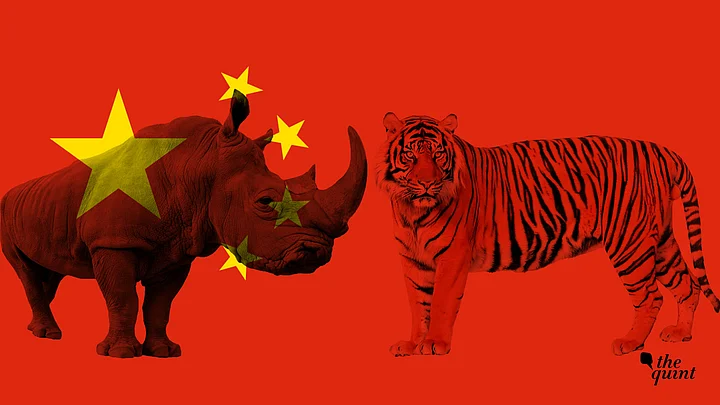Update: In November, China backtracked from easing the trade ban on rhino and tiger products, and said the new regulations that could potentially hit conservation efforts had been “postponed after study”.
A wrinkled face, bloodied and infected with maggots. That’s how an endangered black rhino roamed in Zimbabwe for a week after poachers had shot him with AK47 rifles, until finally, death arrived. Award-winning photojournalist Brent Stirton posted this image, categorised as ‘sensitive content’, on Instagram last week.
The same day, another National Geographic photographer and filmmaker Ami Vitale published a March 2018 image of ‘Sudan’, the last male Northern White Rhino, being comforted moments before he died due to old age in Kenya.
Both images were published in reaction to China reversing its 25-year ban on the use of tiger and rhino products for medicinal purposes, reported CNN. A statement by the State Council of China on 29 October read: “Powdered form of rhino horns and bones from dead tigers can be used in qualified hospitals by qualified doctors recognised by the State Administration of Traditional Chinese Medicine.”
India’s Conservation Efforts Might Take a Hit
The Quint spoke to wildlife activists who underlined how the Chinese government’s decision could deeply affect wildlife conservation efforts in India.
India – home to 60 percent and 85 percent of the global population of wild tigers and greater one-horned rhinos respectively – is not immune from the threat of poaching.
Tiger bone wine and rhino horn are used as medicinal ingredients in China, Vietnam, Laos and other parts of Southeast Asia – but there is no scientific proof of the benefits of these animal parts.
The President of Wildlife Conservation Trust, Anish Andheria, explained that there is a direct link between poaching gangs in India and operators in China. Considering India has a substantial population of wild tigers and rhinoceros, it is “likely to witness a steep escalation of threat to these species,” he said.
Wildlife trade-monitoring network TRAFFIC, however, told The Quint that it is too early to have an estimate of the impact of China’s order.
“Traders involved in the illegal wildlife trade of tiger bone and rhino horn might target the wild populations in India,” said Dr Dipankar Ghose, Director – Species and Landscapes, WWF India. He added that the international consequences of China’s decision could result in the “decimation” of wild populations of tigers and rhinos across the world.
Out of the more than 3,500 wild rhinos in India and Nepal, nearly 70 percent (2,413) are in Assam’s Kaziranga National Park, the Hindustan Times reported, quoting a 2018 census.
Stirton, who was part of an undercover investigation into illegal rhino trade, said, “Any time you legalise the trade of wild animal parts, you create loopholes. You stimulate the demand of that product in the mind of the Chinese consumer.” He warned that in the case of China, the market for wildlife products means catering to the demands of millions of people.
“This is a devastating blow to our ongoing work to save species from cruel exploitation and extinction, and we implore the Chinese government to reconsider.”Iris Ho, Senior Specialist at Humane Society International
China’s Wildlife Farms: ‘Conservation Efforts’ That May Invite Poaching
Beijing said that it will “strictly control” the use of rhino and tiger products for medicinal purposes only, the State-run People’s Daily of China tweeted.
However, activists say that farms where wild animals are bred in captivity for ‘conservation’ are inadequate to feed the demand for rhino and tiger products. Stirton warned that in the case of China, it means opening up the market for wildlife products to millions of people.
While there are only 3,900 tigers found in the wild across the world, China has almost two times (5,000-6,000) the number of tigers in its commercial farms and zoos, according to the Environment Investigation Agency. It is not known how many rhinos are in captivity in the country.
The “seriously flawed” commercial farms can allow traders to “launder” illegal wildlife products that can be disguised as farmed animals, the EIA report said.
Experts also believe such wildlife breeding centres could “invite poaching from the wild to stock them,” Kanitha Krishnasamy, Acting Director (Southeast Asia), TRAFFIC, was quoted as saying by National Geographic in a report earlier this year.
Moreover, there is also the issue of consumers opting for animals from the wild, instead of farms. “I know of people who have come to me and said that they would prefer an animal from the wild to an animal from a farm,” Stirton said, adding that there are multiple reports of tigers being abused in such centres in China.
(At The Quint, we question everything. Play an active role in shaping our journalism by becoming a member today.)
